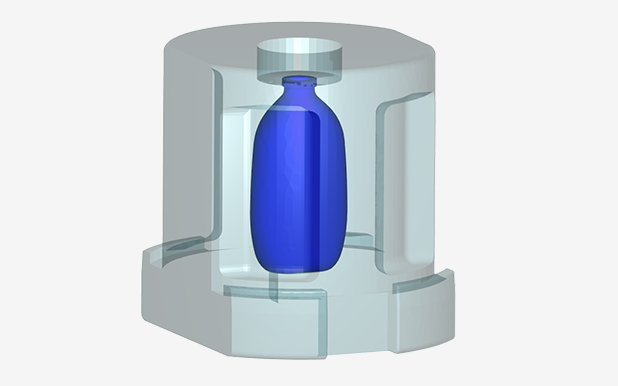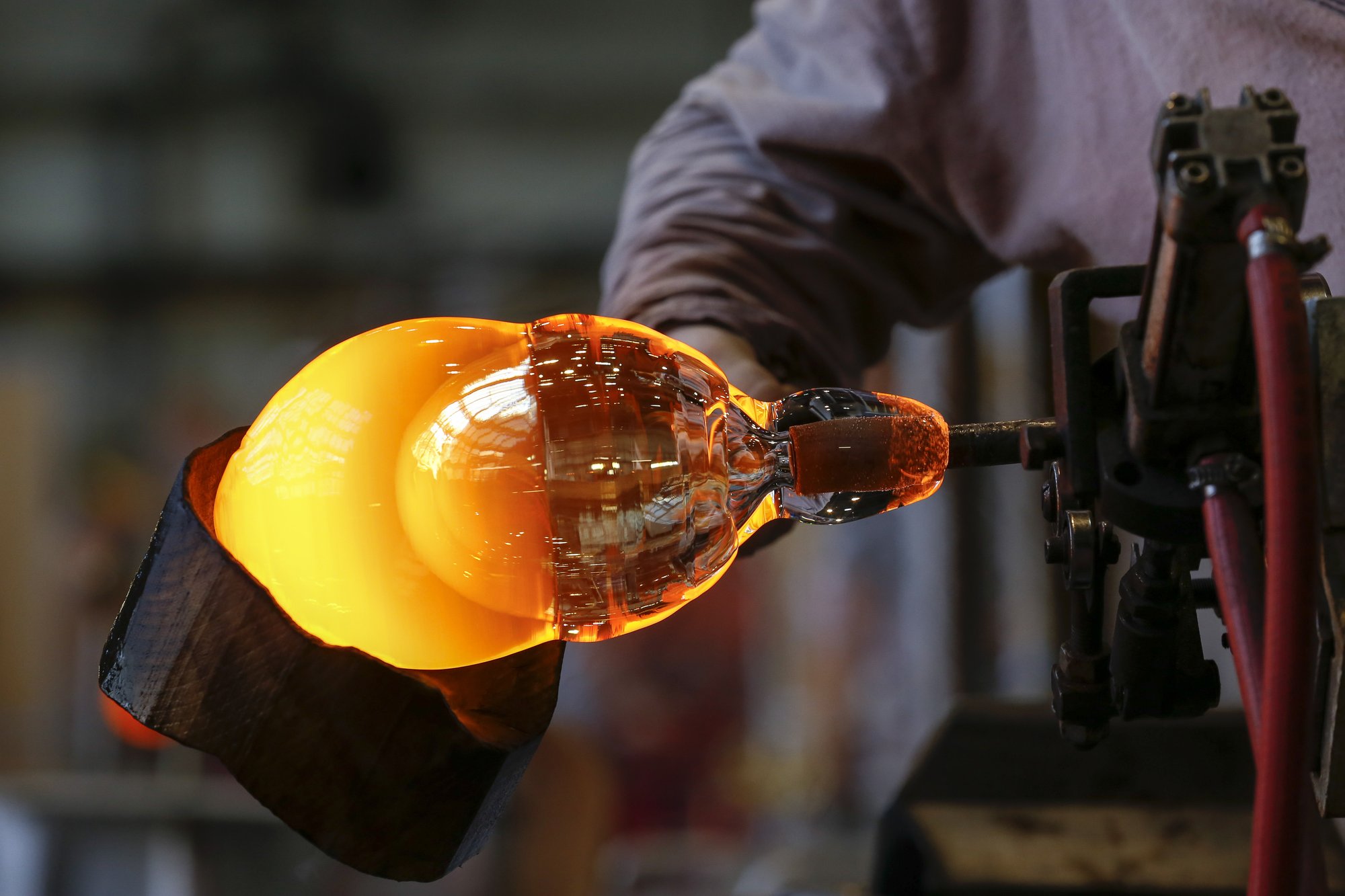Transvalor computing solutions allow the mastering of the quality and final performances of a mold-blown bottle, an accurate prediction of the thickness in the final stage at any point of the glass container, local defects including necking defects, the temperature distribution at any time of the process and the optimal pressure cycle to apply. The software includes a dedicated model for glass (Fulcher) with available data.







